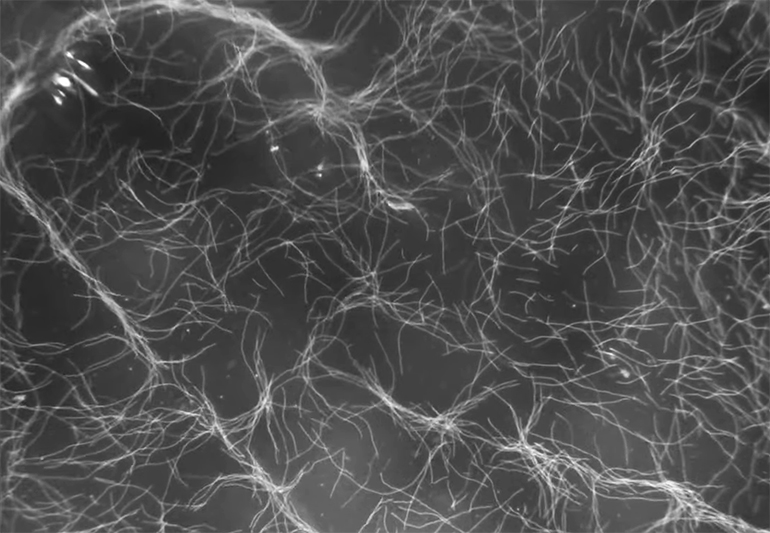Researchers at Caltech have developed a technique that lets them move groups of cells very precisely. It involves genetically modifying cells so that they express small protein air sacs in their interior. The sacs render the cells highly susceptible to manipulation using ultrasound waves, and the researchers can precisely move them into complicated shapes or patterns. The new technology could be very useful for sorting cells for cell therapies or arranging cells on biomaterial constructs to form complex tissue layers. The technique may also allow for control of cell movement within the body using external ultrasound. The sacs also mean that the cells show up well under ultrasound imaging, giving clinicians a way to track their position in the body.
Cells are tiny and delicate, and moving, sorting, or separating them in controlled ways is a challenge. However, unlocking this skill could open the door for numerous applications with biomedical potential. Researchers have already attempted various approaches, such as optical tweezers, which involves using light beams to move individual cells, but this technique is fiddly and is typically only useful for moving one cell at a time.
In terms of separating a specific type of cell from a mixture of cells, researchers can use a fluorescence-based sorting technique, but this has some drawbacks, as described by Di Wu, one of the researchers involved in the study. “A common way people sort cells now is to engineer them to express a fluorescent protein and then use a fluorescent-activated cell sorter (FACS),” said Wu. “That is a $300,000 piece of equipment that is bulky, often lives in a biosafety cabinet, and doesn’t sort cells very fast.”

To develop a better approach, these researchers turned to the tiny air sacs found in some bacteria that help them to stay buoyant in water. Not only do the sacs show up strongly under ultrasound imaging, allowing the researchers to track their location and activity, but they also make the cells highly amenable to being moved around and separated from cells with no air sacs when subjected to ultrasound waves.
The cell movements that the researchers can achieve are impressive in their precision. For instance, they were able to manipulate a group of cells to form a letter “R” in what they describe as an “acoustic hologram.”
Here’s a Caltech video about the new technology:
Study in journal Science Advances: Biomolecular actuators for genetically selective acoustic manipulation of cells
Flashbacks: Acoustic Tweezers Manipulate Live Cells for 3D Bioprinting; Aligning Living Cells Within 3D Printed Tissues Using Ultrasound; Sound Waves Sort Cells for Diagnostics, Cell-Based Therapies
Via: CalTech
